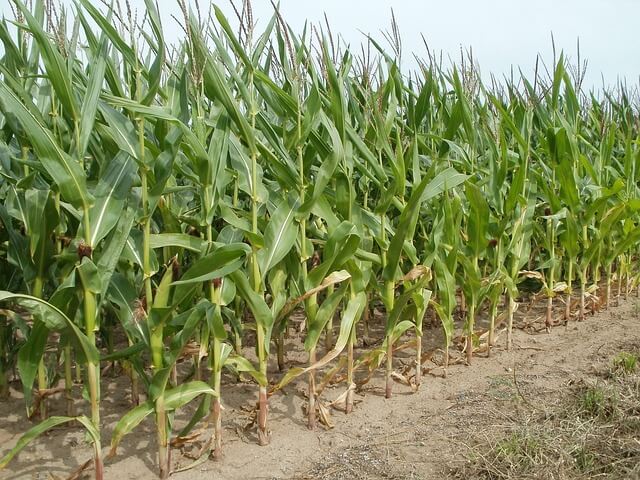New University of Colorado Boulder research reveals that, by the end of the 21st century, the number of farms globally is projected to decrease by half as the average size of existing farms doubles, which poses significant risks to the world’s food systems.
According to a study published in the journal Nature Sustainability, the researchers have conducted the first-ever tracking of the number and size of farms on a year-over-year basis, spanning from the 1960s and projecting through to 2100.
The study demonstrates that even rural, farm-dependent communities in Africa and Asia will witness a decline in the number of operating farms.
Zia Mehrabi, assistant professor of environmental studies at CU Boulder, stated that they observe a turning point from widespread farm creation to widespread consolidation on a global level, representing the anticipated trajectory of humanity. Mehrabi further highlights the association between the size of the farm, the number of farms, and their correlation with key environmental and social outcomes.
To assess the global state of farming, Mehrabi employed data from the UN Food and Agricultural Organization, including information on agricultural area, GDP per capita, and rural population size from over 180 countries. This data was utilized to reconstruct the evolution of farm numbers between 1969 and 2013 and to project these numbers up to 2100.
According to Mehrabi’s analysis, the number of farms across the world is projected to decrease from 616 million in 2020 to 272 million in 2100. This decline can be attributed to the fact that as a country’s economy grows, more individuals migrate to urban areas, resulting in a reduced rural population available for farming activities.
A decline in the number of farms and an increase in farm size has been a long-standing trend in the United States and Western Europe. Recent data from the U.S. Department of Agriculture reveals that there were 200,000 fewer farms in 2022 compared to 2007.
Mehrabi’s analysis indicates that a turning point from farm creation to widespread consolidation will commence as early as 2050 in communities across Asia, the Middle East, North Africa, Oceania, Latin America, and the Caribbean. Sub-Saharan Africa is expected to follow a similar trajectory later in the century.
The research also highlights that even if the total amount of farmland remains unchanged globally in the coming years, there will be a reduction in the number of people who own and farm the available land. This trend raises concerns about biodiversity conservation, particularly when biodiversity preservation is a top priority.
Mehrabi explains that larger farms generally exhibit reduced biodiversity and a higher prevalence of monocultures. Conversely, smaller farms tend to possess greater biodiversity and crop diversity, making them more resilient in the face of pest outbreaks and climate shocks.
It is not only biodiversity that is at risk but also the food supply itself. Mehrabi’s previous research reveals that the world’s smallest farms, occupying just 25% of the world’s agricultural land, contribute to one-third of the world’s food production.
Moreover, fewer farms imply a decreased number of farmers who carry valuable Indigenous knowledge dating back centuries. As farms consolidate, this traditional knowledge is progressively replaced by new technology and mechanization.
Building a diverse food portfolio is deemed beneficial in the long run, akin to a diversified investment portfolio that yields better outcomes, according to Mehrabi. With approximately 600 million farms contributing to the world’s current food systems, there is a considerable level of diversity. In the event of damage to one farm, the impact can be mitigated by the success of others. However, reducing the number of farms while increasing their size amplifies the impact of potential shocks, resulting in heightened risk.
The shift towards corporate farm ownership also presents advantages. The paper acknowledges that farming consolidation can lead to improved labor productivity, economic growth, and enhanced management systems resulting from a larger workforce engaged in non-farm employment.
Mehrabi highlights one of the significant benefits of farm consolidation, which is improved economic opportunity for individuals and the freedom to choose their own career path, either within or outside of the agricultural sector.
However, it is important to note that future farm workers may require additional support, as the agriculture industry experiences high suicide rates, ranking among the highest rates by occupation in the U.S.
Mehrabi emphasizes the current situation, stating, “Currently, we have around 600 million farms feeding the world, and they’re carrying 8 billion people on their shoulders. By the end of the century, we’ll likely have half the number of farmers feeding even more people. We really need to think about how we can have the education and support systems in place to support those farmers.”
Through the dissemination of global agricultural trends, Mehrabi hopes that his analysis will lead to the development of policies that prioritize biodiversity conservation, climate resilience, the preservation of Indigenous knowledge, and provide incentives to improve the rural economy in countries worldwide.


